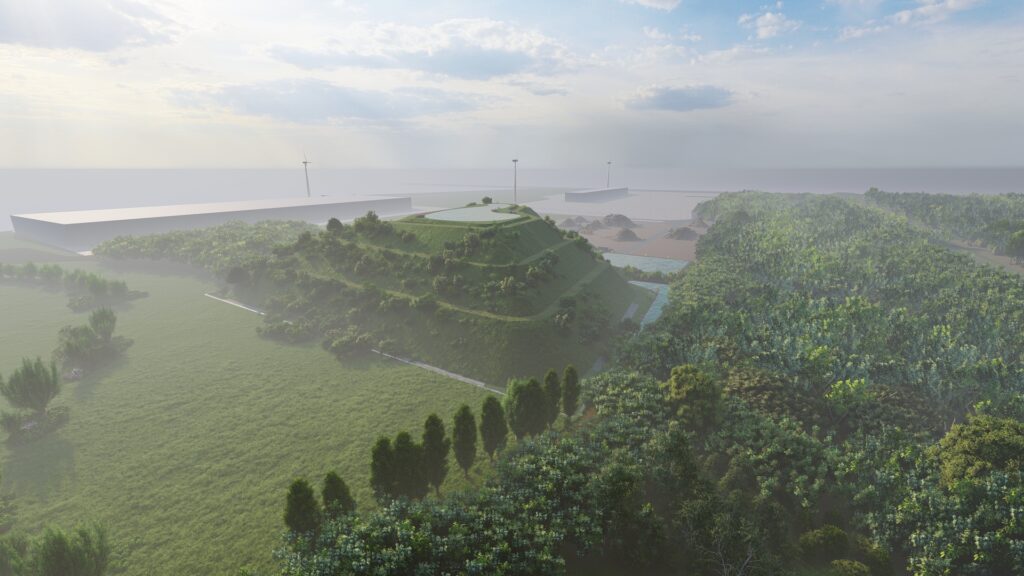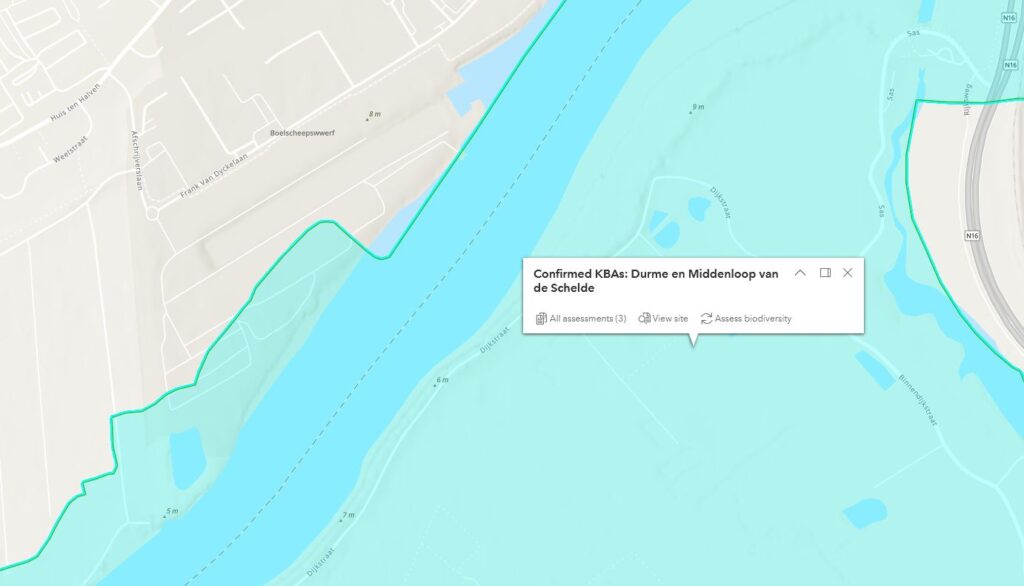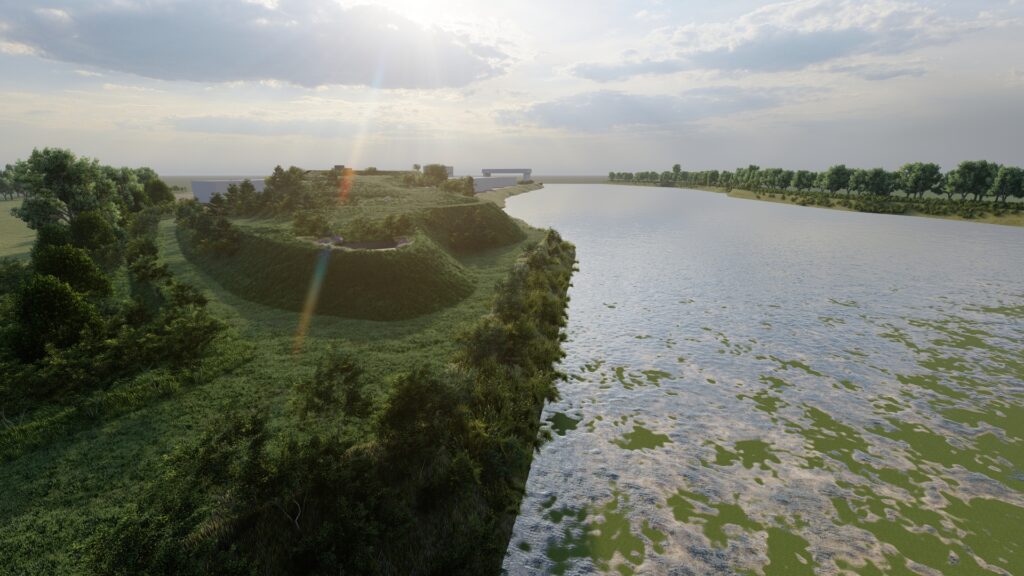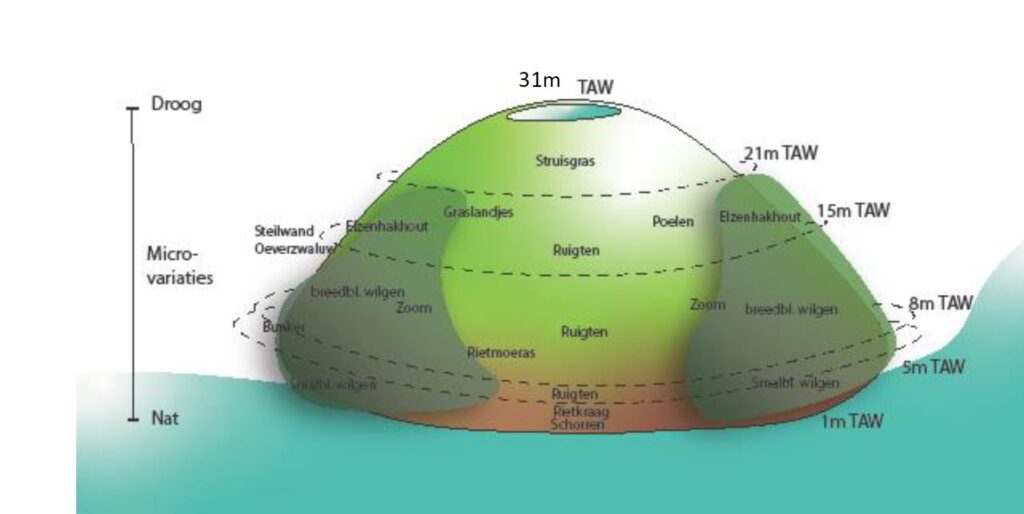Biodiversity

Project development and landuse
Landuse change is a relevant metric for us. We started tracking the footprint of our developments in 2022.
We prefer to build in height and therefore we choose towers for our residential developments, limiting the footprint of the building, giving more space for nature. Many of our current and coming developments are renovations and reconversions, which reduces the additional landuse. We strive to de-pave surfaces where the context of the developments allows to do so and to enhance the existing nature.
| Year | # of projects | Footprint building | Sealed area | Total landuse |
|---|---|---|---|---|
| 2022 | 3 | 2,325 m² | 1,098 m² | 3,423 m² |
| 2023 | 4 | 4,605 m² | 1,492 m² | 6,097 m² |
Proximity to Key Biodiversity Areas
We mapped whether any of our locations are close or in a Key biodiversity areas (KBA).
This comprises our offices and production facilities that we own or lease as well as the grounds that C-living – our project developer- owns for eventual development.
We defined “near” as 250m away from the area.
Further we mapped whether any of these locations are having a negative effect on biodiversity in these KBAs. This overview is based on feedback we received from the companies, linked to advice from the respective national environmental agencies. This overview is created as thoroughly as possible and to the best of our knowledge.
In Belgium several of our offices are located close to the KBA “Durme en Middenloop van de Schelde”. In Temse, these are the offices of Imtech, NLT-Pivaco and the Vita swimming facility. In Dendermonde it’s the office of Follaets Painting. Given from what we know, there is no negative impact.
Our HQ in Temse is partly located in this KBA. As the Agency for Nature and Forest (Agentschap voor Natuur en Bos” has issued a positive assessment for our site regarding its impact on biodiversity, there is no negative impact either.
We own grounds on five locations of (future) developments that are located close to various KBAs, mostly in the province of Limburg. As four of these projects are currently under construction, we conclude that these areas are not negatively affected by Cordeel. Otherwise the Flemish environmental agency would not have granted a positive advice and the construction process would not have started. For one of our future developments the masterplanning phase is currently ongoing, where we work together with an ecologist to make sure that there will be no negative impact on the Key Biodiversity Area it’s located close to.
In the Netherlands, two office buildings (Terneuzen & Vlissingen) are close to the Westerschelde as is the development of residential units in Cadzand. As there hasn’t been a negative advice by the Dutch environmental authorities, we conclude that these areas are not negatively affected by Cordeel.
The headquarter of C-Serbia is located in Belgrade, close to a confirmed KBA. Yet the impact on it is little to non-existing as it’s only a small office building with no direct access to the area.
To conclude, there are not locations that we own, lease or manage that are negatively effecting a Key Biodiversity Area they are located in or close-by.

Biodiversity of our energy hill in Temse
Currently, we’re building the first energy hill as a pilot case in Temse on the location of our headquarter.
We are constructing a green hill with an altitude of 21 metres, with a water basin placed on top of that hill. The interconnected basins – on top of the hill and at the bottom – form a closed circuit. Excessive renewable energy or imbalances on the electricity grid, are used to pump up water and store it in the basin on top of the hill as potential energy. This energy can be converted into hydroelectricity as needed.
The final design of each hill is adapted to fit in with the local fauna and flora, creating an integrated ecological habitat that blends in perfectly with its surroundings.
The area is located in a Key Biodiversity Area and next to a Natura 2000 area.
We underwent in-depth studies on the possible impact of the energy hill, how we can mitigate these impacts and actually improve biodiversity. In collaboration with a ecologist we got an overview of the wildlife living and breeding in the area. These comprise quails, bluethroats, sand martin and several bats.
The ecologist created a biological design of the types of plants and habitats that should be located on the hill.
The area used to be a dumpsite of the former shipyard “Boelwerf” which is way we remediated the grounds before the start of the works.
Thanks to these efforts the Agency of Nature and Forest (“Agentschap voor Natuur en Bos”) concluded that building the hill in the way we explained will improve the biodiversity.




Temporary land-use of hemp
In 2023, C-biotech planted industrial hemp on 182,000 m².
The contaminated or marginal grounds (102,000 m² in 2023) are supposed to be remediated by hemp or otherwise simply are unused, industrial areas.
The non-contaminated grounds (80,000 m² in 2023) are mostly already used for agricultural purposes. We offer the farmers the option to plant hemp on their grounds to receive a fair compensation.
All areas that we use for growing hemp are temporarily used for this purpose. In 2023 we did not own grounds that were or will be solely used to plant hemp on. Thanks to the fast growing conditions of the plant, the months of November – April are usually not used for growing.
No pesticides and little to no fertilizers are being used to grow the hemp for C-biotech.
